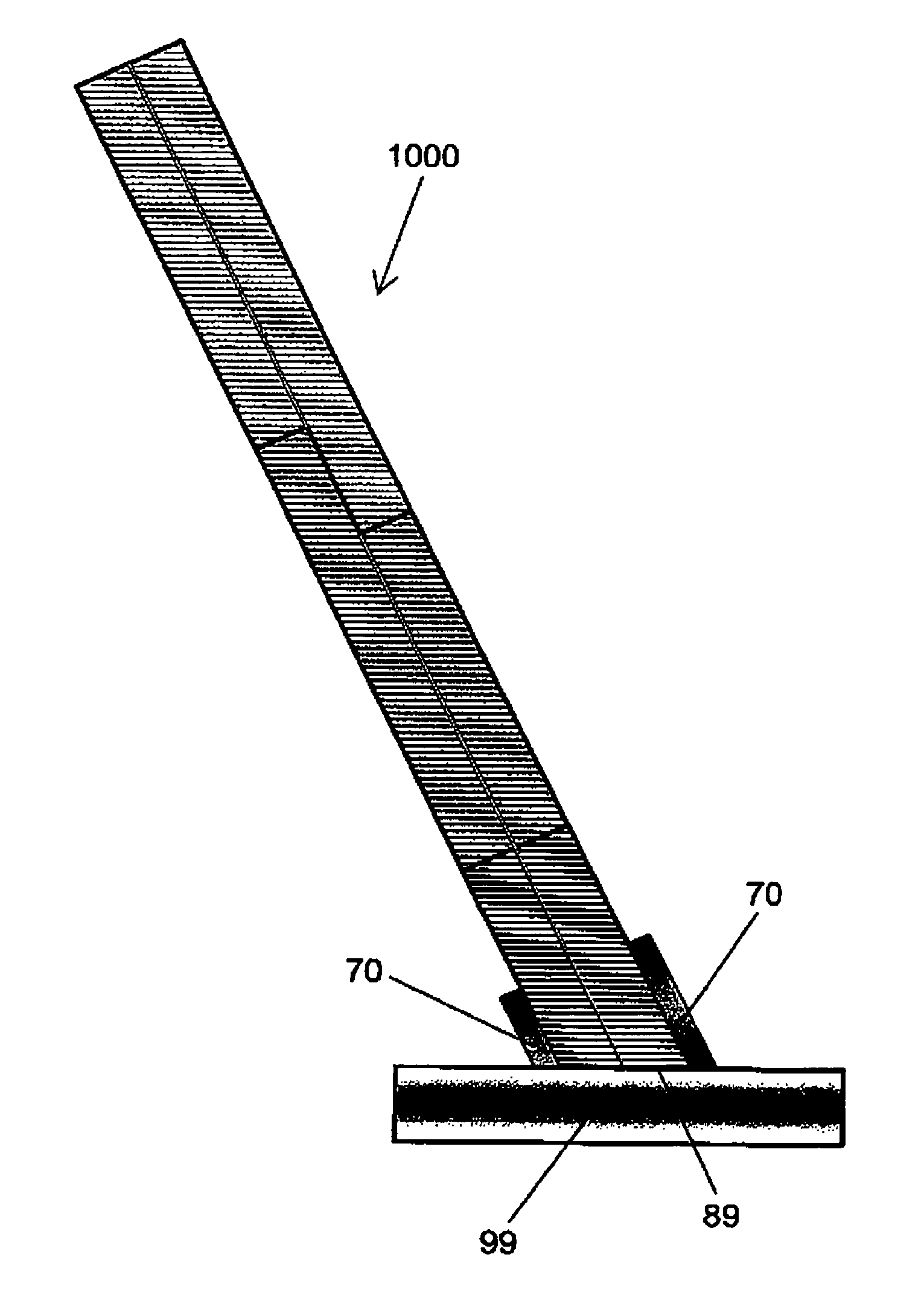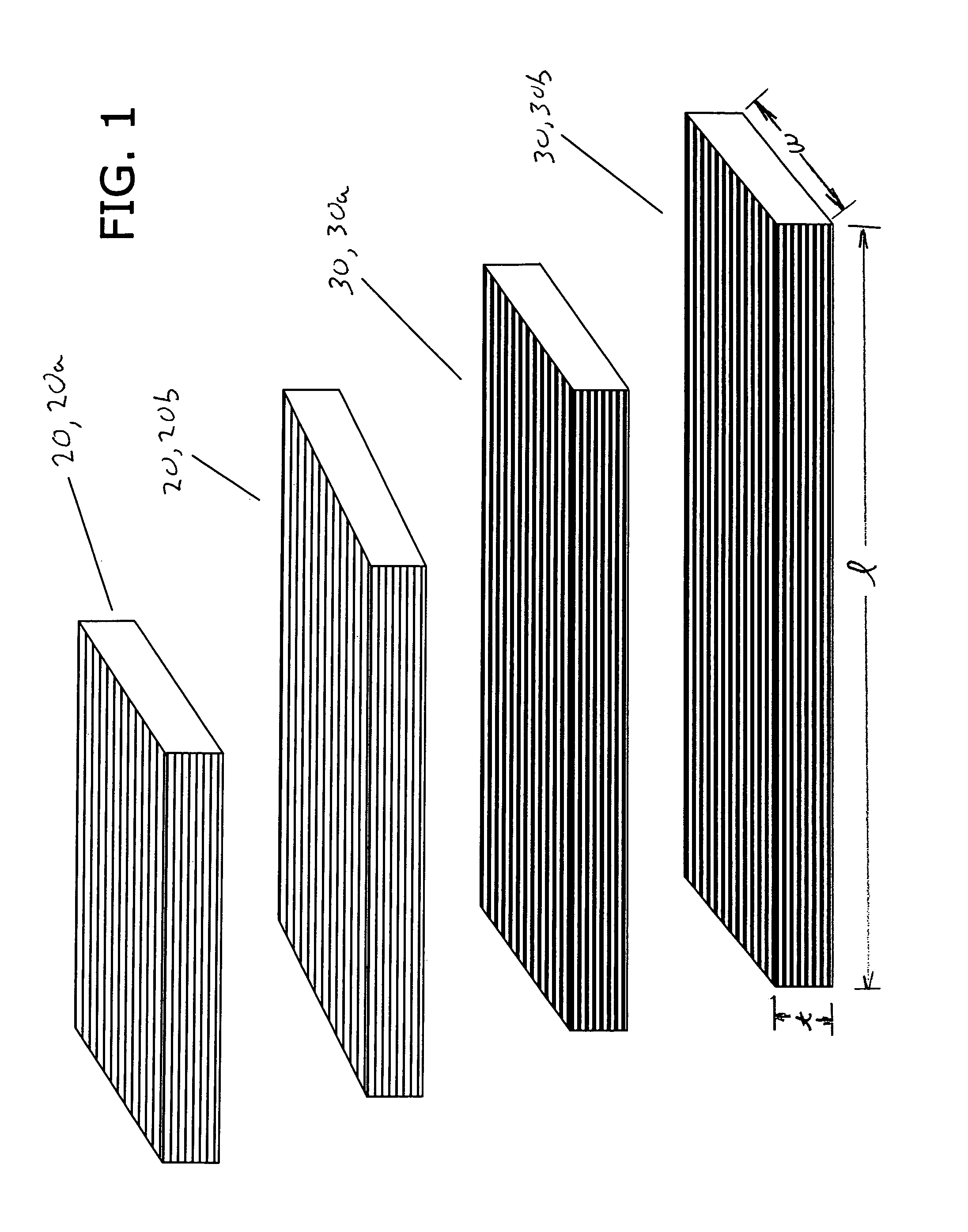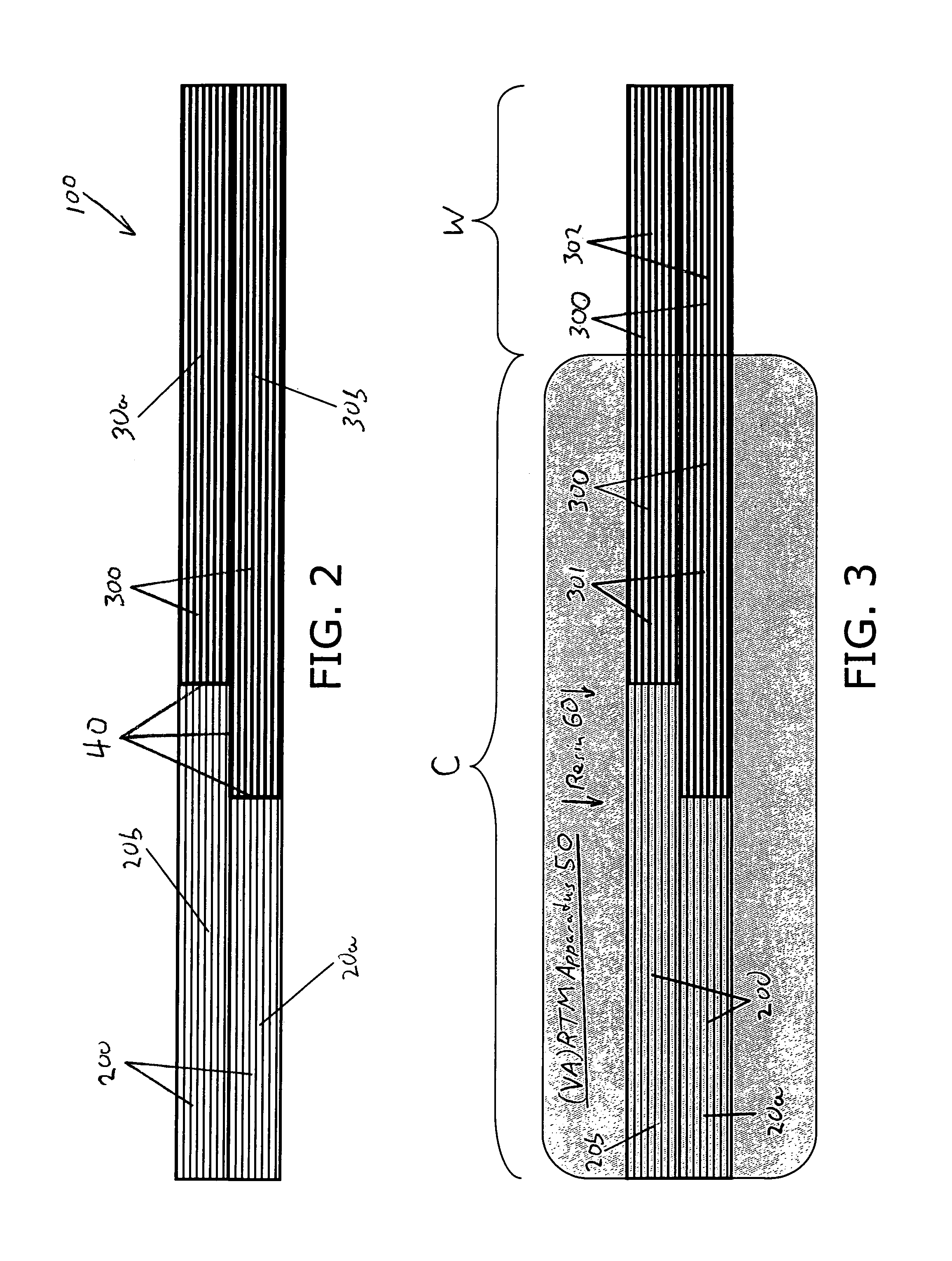Hybrid composite welded joint
a hybrid composite and welded joint technology, applied in the field of composite materials, can solve the problems of adhesives being susceptible to degradation in aqueous environments, often technologically challenging joints, and using either co-curing or secondary bonding
- Summary
- Abstract
- Description
- Claims
- Application Information
AI Technical Summary
Benefits of technology
Problems solved by technology
Method used
Image
Examples
Embodiment Construction
[0033]Reference is now made to FIG. 1, which depicts two nonmetallic fibrous preform panels 20 (viz., 20a and 20b) and two metallic fibrous preform panels 30 (viz., 30a and 30b). The nonmetallic fiber panel preforms 20 are composed, for example, of E-glass woven roving. The metallic fiber panel preforms 30 are composed, for example, of HARDWIRE® unidirectional high strength steel wires. Panels 20 and 30 can be either single-ply or multi-ply. All four panel preforms 20 and 30 are characterized by the same width w and thickness t, but vary in length l.
[0034]With reference to FIG. 2, nonmetallic fiber panel performs 20a and 20b are stacked so as to be even at their lefthand edges and to be overlapping at their righthand edges. Similarly, metallic fiber panel preforms 30a and 30b are stacked so as to be even at their righthand edges and to be overlapping at their lefthand edges. The pair of overlapping nonmetallic fiber panel preforms 20a and 20b (at their staggered righthand edges) are...
PUM
| Property | Measurement | Unit |
|---|---|---|
| metallic | aaaaa | aaaaa |
| structure | aaaaa | aaaaa |
| thickness | aaaaa | aaaaa |
Abstract
Description
Claims
Application Information
 Login to View More
Login to View More - R&D
- Intellectual Property
- Life Sciences
- Materials
- Tech Scout
- Unparalleled Data Quality
- Higher Quality Content
- 60% Fewer Hallucinations
Browse by: Latest US Patents, China's latest patents, Technical Efficacy Thesaurus, Application Domain, Technology Topic, Popular Technical Reports.
© 2025 PatSnap. All rights reserved.Legal|Privacy policy|Modern Slavery Act Transparency Statement|Sitemap|About US| Contact US: help@patsnap.com



